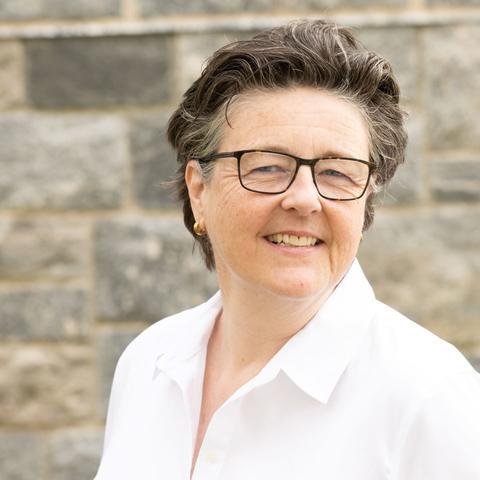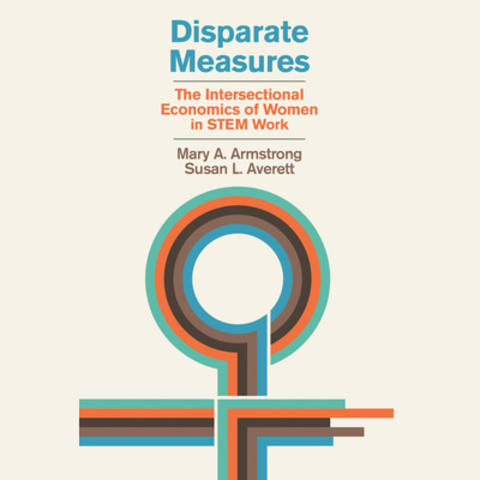Mary Armstrong ’87 has spent her career trying to clear pathways for women, particularly women of diverse backgrounds, so they can enter the professional field of their choice, including those in science, technology, engineering and math (STEM). Then, she became curious about what comes next.
“I started to realize that while we are trying hard to move women through the STEM doorway, we hardly ever ask: What happens when they get to the other side? We are so busy patching the pipeline and making sure that women get Ph.D.s in STEM that we're forgetting to look at what comes after,” said Armstrong, the Charles A. Dana Professor of Women’s, Gender & Sexuality Studies and English at Lafayette College in Easton, Pennsylvania.
In her new book, “Disparate Measures: The Intersectional Economics of Women in STEM Work,” Armstrong examines the economic promises of STEM careers and their viability for women from historically marginalized backgrounds. Authored with colleague Susan Averett, the Charles A. Dana Professor of Economics at Lafayette, the book offers case studies examining the STEM work experiences of women who are Black, American Indian/Alaska Native, Asian/Pacific Islander, and Hispanic/Latina, as well as foreign-born women, women with disabilities, Queer women, and mothers.
Is a STEM Career Equitable for Diverse Women?

Mary Armstrong ’87 says encouraging diverse women to enter STEM careers isn’t enough: They should also have equitable experiences in the STEM workplaces, including equal pay.
Read Time
In their review, Armstrong and Averett discovered that the economic promises made to diverse women entering the STEM workforce were mostly unfounded. Instead, these women often “enter a labor force where fundamentally entrenched, hierarchized dynamics of race, gender and other social hierarchies are in full play,” they wrote.
“I earnestly hope that in the service of facts, principle and social justice, “Disparate Measures” will help people think more equitably about what they're doing when they push diverse women into STEM. We must invest more in enabling these women to succeed and more strongly commit to making STEM work an equitable experience for them,” Armstrong said.
“Dubious promise”
In the book, Armstrong and Averett closely examine the participation patterns and wages of diverse women in U.S. STEM professions and compare that data to the experiences of white men.
“We make a lot of cultural promises to diverse women in STEM. We say that STEM jobs are the pathway to social advancement and economic independence and status. But is it really true?” she said.
The answer is usually no, she said.
“Over and over, we saw that the kinds of STEM work diverse women do varies based on their backgrounds and that they experience wage gaps relative to white men and wage gaps compared to each other,” she said. “So, the idea that STEM guarantees diverse women economic success is actually a much more dubious promise than we realized.”
Armstrong said it is critical to get women from diverse backgrounds into STEM fields. Their presence benefits the U.S. economy by increasing innovation and excellence in STEM and can help shore up the economy’s needs for STEM workers, particularly in health care and the tech sector, she said.
“However, when the National Science Foundation pours millions of dollars into programs to improve access, it is important to also ensure that after that investment in access is made, the other side — the job side — is honest, decent and equitable,” she said. “Until we pay attention to broader forms of systemic injustice, we are not going to solve the STEM diversity and STEM economics problem.”
Gender as a intellectual lens
After graduating from Holy Cross with a degree in English, Armstrong went to Duke University, earning a Ph.D. in English and a graduate certificate in women’s studies. Her interest in gender as an intellectual and academic lens through which to see the world, politics and professions started at Holy Cross, though. Although the College did not have a women’s studies program when she was a student, Armstrong said two faculty members — Dale Bauer and Hilde Hein — inspired her through their courses on women’s literature and feminist philosophy.
“I realized that I absolutely loved the interdisciplinary perspective. It was incredibly exciting to see a model where different lenses are put together to get more than the sum of the parts,” Armstrong said.
After Duke, she accepted a faculty position at California Polytechnic State University, where she received tenure and worked with science and engineering faculty to understand why there weren't enough women in STEM fields in academia and how to improve access for diverse women STEM faculty. Remembering her experience at Holy Cross, its intimate campus and strong faculty connection with students, Armstrong said she accepted a tenured faculty position at Lafayette, where she currently also serves as chair of the Women’s, Gender & Sexuality Studies department, and continued with her research.
“A lot of my life path has been connected to English, but it's been centered on gender studies and interdisciplinary work, and grappling with social problems as part of an intellectual team,” she said.

